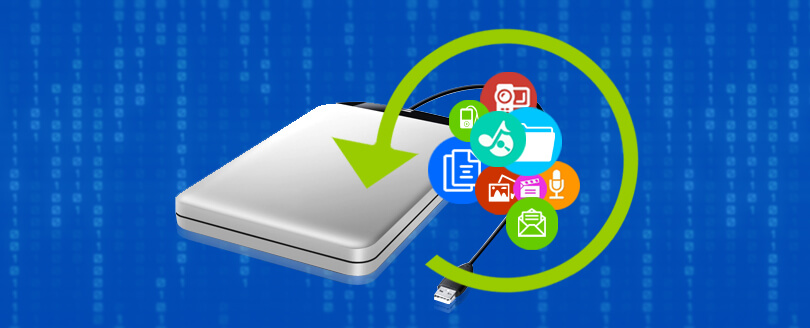Read time 7 minutes
Manual Trick to Recover Data from Unrecognized External Drive
External hard disks are now available with extended limits to store TBs of data without any hassle. They can be used for storing backups as well. They often serve for the purpose of data recovery whenever the system’s main disk goes inaccessible.
The situation becomes troublesome when the system can’t recognize or detect the external hard disk and throws up an error saying, “the drive cannot be accessed,” “the drive is not formatted,” “RAW drive is not initialized” and much more. This indicates corruption or fault in the drive that occurs due to improper usage or simply due to some external issues. But what we need to investigate, before learning how to recover the data; is that what are the reasons which cause an external drive to be undetectable. To do that let us consider these following points
- While you are still using the external drive, there might be a sudden power surge, as a result of which you might have the drive become undetectable.
- Again, if the external drive gets damaged or if it has broken, you might end up with an inaccessible external drive.
- If the PC shuts down all of a sudden, while you still have the hard-drive connected to it, the incident might render your hard-drive inaccessible.
- If the external hard-drive has faced a virus attack or a malware infection, it might be adversely affected making it inaccessible.
- Another reason for inaccessibility is the wear and tear of the external hard-drive due to long-time usage.
- In case the hard drive system files or drivers have been deleted, or if your OS has faced corruption, you might end up with an inaccessible external hard-drive.
Avail Kernel for Windows Data Recovery software to restore data from unrecognized or corrupt external drives, including Pen Drives, Hard Disks, USB Drives, etc.
As a result of these reasons, a lot of your external hard-drive data might just be lost. Now, the question that challenges the user is, “Are you willing to bear this loss and move on with your business?”
Obviously not, right?
Here’s a reliable manual method that can help you deal with the inaccessibility of external disk and save your critical data:
Firstly, confirm the inaccessibility issue of your disk by testing it with some other system. This will help to ensure whether the problem is with the USB drive or your system’s port itself. If it is still unrecognized, then plug the USB drive back to your system’s port and perform the following steps:
- Go to the Start menu.
- Click on “My Computer/This PC”. A new window will open up displaying the list of drives existing or connected to your system.
[ you can note the letters assigned to each drive, for example – C, D, E, etc.] - Browse to the Map Network Drive tab available on the top left side of the window. Click Continue when the second window prompts for your permission to access a new menu.
- On the top of new windows that will open up, click the Drive button. Select a drive that’s currently not in use like ‘I’ or ‘H’ and hit the Browse button to specify the drive that your system is not recognizing. After drive selection, click OK.
- Then, close the window by clicking on the Finish button.
- Finally, restart your system and open “My Computer/This PC” and check whether the external drive is accessible.
This method will certainly help you to deal with the USB inaccessibility, but if you face the loss of data too, it would be better to switch to a third-party data recovery solution.
If you want to invest in a professional tool, the software is good. It is encoded with powerful algorithms for the recovery of both lost and deleted files with utmost accuracy.
You can easily recover data from the external drive that has gone unrecognized or undetectable in your system through manual methods. However, sometimes you may fail to retrieve the data too. Using a proficient third party tool like Kernel for Windows Data Recovery will prove to be a sensible choice to get your data back in its original form. If you are wondering how The Tool might help, The Tool is endowed with three different modes, namely; ‘Quick Scan’, ‘Deep Scan’, ‘File Trace.’ To mention, one of the three, let us consider ‘Deep Scan’ for example. Follow these Steps:.
- Select the drive you wish to recover and Click Next.
- Select between 2 options, namely; Use existing partition info and Search partition. Click ok. The process of locating the partitions. Then the following is displayed:
- Select a Partition and click Next and then select the File System that you wish to recover.
- Select the data and click Recover.
- Browse to select a destination to save. Click Ok
- The saving process begins
- Then you have the following message; click Ok.
Conclusion
Whenever you are facing errors while connecting the external hard drive with computer, then you can use the software to check the corruption in the logical drive. It will scan the drive and retrieve all the contents of it. Then you can save the recovered data in the computer folder.
